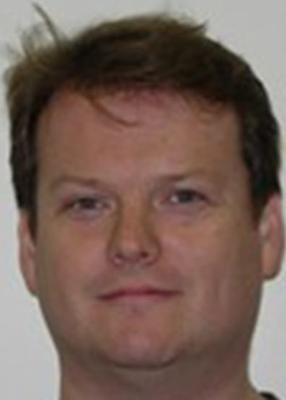
Multimessenger Astrophysics
Many astrophysical phenomena release not just light (electromagnetic radiation), but also gravitational waves and/or elementary particles including neutrinos and cosmic rays. Each of those signals carries different information about the physics of the source, so collecting more than one enables us to have a deeper understanding of the event that produced them. However, it is an enormous challenge for different types of instruments to coordinate simultaneous observations, and to verify that signals have a common source. Projects like AMON and SciMMA help alert the community to potential multi-messenger events so that an observing program can be coordinated as quickly and efficiently as possible.
IGC members who study Multimessenger Astrophysics
| Name | Role | Affiliation | Phone | Office Address | Affiliated Center(s) | Research Topics(s) | ||
|---|---|---|---|---|---|---|---|---|
 | Shomik Adhicary | Graduate Student | Physics | sva5823@psu.edu | +1 814 865 7533 | 334 Whitmore Laboratory | IGC | Gravitational Waves, Dark Matter, Multimessenger Astrophysics, Black Holes |
 | Julien Alfaro | Graduate Student | Physics | jpa5771@psu.edu | +1 814 865 7533 | 204 Osmond Laboratory | IGC, CMA | Multimessenger Astrophysics, Cosmic Rays, Neutrinos |
 | Heather Allen | Graduate Student | Physics | heather.allen@psu.edu | --- | 204 Osmond Laboratory | CMA, IGC | Multimessenger Astrophysics, Cosmic Rays |
 | Tyler Anderson | Faculty | Physics | tba109@psu.edu | +1 814 865 2013 | 212A Osmond Laboratory | CMA | Cosmic Rays, Dark Matter, Neutrinos, Multimessenger Astrophysics |
 | Hugo Alberto Ayala Solares | Faculty | Physics | hgayala@psu.edu | +1 814 863 7533 | 206A Osmond Laboratory | IGC, CMA | Multimessenger Astrophysics |
 | Mukul Bhattacharya | Postdoc | Astronomy, Physics | mmb5946@psu.edu | -- | 320A Osmond Laboratory | CMA | Multimessenger Astrophysics, Gravitational Waves, Neutrinos, Cosmic Rays |
 | Maitraya Bhattacharyya | Postdoc | Physics | mbb6217@psu.edu | +1 814 863 9605 | 314 Whitmore Laboratory | CMA | Multimessenger Astrophysics, Gravitational Waves, Black Holes |
 | Carlos Blanco | Faculty | Physics, ICDS | carlosblanco@psu.edu | +1 814 865 7533 | 303K Osmond Laboratory | CFT, CTOC, CMA, IGC | Dark Matter, Neutrinos, Multimessenger Astrophysics, Cosmic Rays |
| W. Niel Brandt | Faculty | Astronomy, Physics | wnbrandt@gmail.com | +1 814 865 3509 | 514A Davey Laboratory | CTOC | Quasars, Dynamic Universe, Black Holes, Multimessenger Astrophysics | |
 | Jose Carpio Dumler | Graduate Student | Physics | jac866@psu.edu | +1 814 865 7533 | -- NONE | CMA | Neutrinos, Multimessenger Astrophysics, Dark Matter |
 | Koustav Chandra | Postdoc | Astronomy, Physics | kbc5795@psu.edu | -- | 307 Whitmore Laboratory | IGC | Gravitational Waves, Black Holes, Multimessenger Astrophysics |
 | Stephane Coutu | Faculty | Physics, Astronomy | sxc56@psu.edu | +1 814 865 2015 | 303H Osmond Laboratory | CMA | Cosmic Rays, Multimessenger Astrophysics |
 | Douglas Cowen | Faculty | Physics | dfc13@psu.edu | +1 814 863 5943 | 303D Osmond Laboratory | CMA | Dynamic Universe, Neutrinos, Multimessenger Astrophysics |
 | Abhishek Das | Graduate Student | ICDS, Physics, Astronomy | ajd6518@psu.edu | -- | 321E Thomas Building | IGC, CMA | Cosmic Rays, Black Holes, Neutrinos, Gravitational Waves, Multimessenger Astrophysics, Dark Matter, Quasars |
 | Michael Eracleous | Faculty | Astronomy | mxe17@psu.edu | +1 814 863 6041 | 414 Davey Laboratory | CTOC, CMA | Quasars, Black Holes, Dynamic Universe, Multimessenger Astrophysics |
 | Abe Falcone | Faculty | Astronomy | adf15@psu.edu | +1 814 863 5364 | 516 Davey Laboratory | CMA | Multimessenger Astrophysics, Cosmic Rays, Dynamic Universe, Quasars |
 | Jacob Fields | Graduate Student | Physics | jmf6719@psu.edu | -- | 321E Whitmore Laboratory | CMA | Multimessenger Astrophysics, Gravitational Waves, Black Holes |
 | Derek Fox | Faculty | Astronomy | dbf11@psu.edu | +1 814 863 4989 | 425 Davey Laboratory | CMA, CTOC | Dynamic Universe, Neutrinos, Multimessenger Astrophysics |
 | Ish Gupta | Graduate Student | Physics | ishgupta@psu.edu | +1 814 865 7533 | 317 Whitmore Laboratory | IGC | Multimessenger Astrophysics, Gravitational Waves, Black Holes |
 | Eduardo Gutiérrez | Postdoc | Physics | exg5366@psu.edu | +1 814 863 9605 | 301B Whitmore Laboratory | IGC | Black Holes, Multimessenger Astrophysics, Neutrinos, Gravitational Waves, Cosmic Rays |
 | Peter Hammond | Postdoc | Physics | pph5189@psu.edu | +1 814 863 9605 | 307 Whitmore Laboratory | IGC | Neutrinos, Gravitational Waves, Multimessenger Astrophysics |
 | Chad Hanna | Faculty | Astronomy, ICDS, Physics | crh184@psu.edu | +1 814 865 2924 | 303 Whitmore Laboratory | CMA | Gravitational Waves, Black Holes, Multimessenger Astrophysics, Dark Matter |
 | Yu Jiang | Faculty | Physics | yuj119@psu.edu | +1 814 863 0871 | -- Whitmore Laboratory | CMA | Cosmic Rays, Multimessenger Astrophysics |
 | Prathamesh Joshi | Graduate Student | ICDS, Physics | ppj5075@psu.edu | -- | 301D Whitmore Laboratory | IGC | Gravitational Waves, Multimessenger Astrophysics |
 | Sanika Khadkikar | Graduate Student | Physics, ICDS | sbk6031@psu.edu | -- | 317 Whitmore Laboratory | CMA | Multimessenger Astrophysics |
 | Ali Kheirandish | Graduate Student | Physics | abk5717@psu.edu | +1 814 865 7533 | -- Davey Laboratory | CMA | Neutrinos, Multimessenger Astrophysics, Dark Matter |
 | Ryan Krebs | Graduate Student | Physics | rjk5416@psu.edu | (814) 865-7533 | 322 Osmond Laboratory | CMA, IGC | Neutrinos, Multimessenger Astrophysics |
 | Yuexing Li | Faculty | Astronomy | yul20@psu.edu | +1 814 867 2291 | 417A Davey Laboratory | CMA, CTOC | Black Holes, Multimessenger Astrophysics, Astroinformatics |
 | Victor Liu | Graduate Student | Astronomy | vql5180@psu.edu | 6467255201 | 537 Davey Laboratory | IGC | Quasars, Black Holes, Multimessenger Astrophysics, Gravitational Waves |
 | Niana Mohammed | Graduate Student | Astronomy | nnm5189@psu.edu | +1 814 865 0419 | 537 Davey Laboratory Davey Laboratory | CTOC, CMA | Multimessenger Astrophysics, Black Holes, Quasars |
 | Mainak Mukhopadhyay | Postdoc | Astronomy, Physics | mkm7190@psu.edu | -- | 320L Osmond Laboratory | CMA | Multimessenger Astrophysics, Gravitational Waves, Neutrinos |
 | Eduardo Munguia Gonzalez | Graduate Student | Astronomy, ICDS | eem5633@psu.edu | 814 863 5565 | 445A Davey Laboratory | IGC | Multimessenger Astrophysics, Astrostatistics |
 | Kohta Murase | Faculty | Physics, Astronomy | kum26@psu.edu | +1 814 863 9594 | 321B Osmond Laboratory | CMA | Cosmic Rays, Neutrinos, Multimessenger Astrophysics, Gravitational Waves, Dark Matter |
 | Peter Mészáros | Faculty | Physics, Astronomy | nnp@psu.edu | 814-863-4167 | 504 Davey Laboratory | CMA | Gravitational Waves, Neutrinos, Multimessenger Astrophysics |
 | Kyle Neumann | Graduate Student | Astronomy | kdn5172@psu.edu | (814) 865-0418 | 537 Davey Laboratory | IGC | Black Holes, Dynamic Universe, Gravitational Waves, Multimessenger Astrophysics |
 | Victoria Niu | Graduate Student | Physics | wmn5062@psu.edu | +1 814 865 7533 | 334 Whitmore Laboratory | IGC | Black Holes, Gravitational Waves, Dark Matter, Multimessenger Astrophysics |
 | Alexander Pace | Staff | Physics | aep14@psu.edu | +1 814 865 6995 | 334B Whitmore Laboratory | IGC | Multimessenger Astrophysics, Gravitational Waves |
 | Surendra Padamata | Graduate Student | Physics | ssp5361@psu.edu | -- | 322 Osmond Laboratory | CMA | Multimessenger Astrophysics, Black Holes, Cosmic Rays, Gravitational Waves, Neutrinos |
 | Tetyana Pitik | Faculty | Physics | tfp5368@psu.edu | N.A. | 305 Davey Laboratory | IGC | Multimessenger Astrophysics |
 | Cort Posnansky | Graduate Student | Physics | clp5773@psu.edu | +1 814 863 9605 | 334 Whitmore Laboratory | CMA | Black Holes, Multimessenger Astrophysics, Gravitational Waves |
 | Yi Qiu | Graduate Student | Physics | yiqiu@psu.edu | 8142328268 | 322 Whitmore Laboratory | IGC | Black Holes, Neutrinos, Gravitational Waves, Multimessenger Astrophysics |
 | David Radice | Faculty | Astronomy, Physics | dur566@psu.edu | +1 814 865 7533 | 304 Whitmore Laboratory | CMA | Black Holes, Neutrinos, Multimessenger Astrophysics, Gravitational Waves |
 | Shio Sakon | Graduate Student | Physics, ICDS | sks6461@psu.edu | -- | 321 F Whitmore Laboratory | IGC | Black Holes, Gravitational Waves, Multimessenger Astrophysics |
 | B.S. Sathyaprakash | Faculty | Physics, Astronomy | bss25@psu.edu | -- | 312 Whitmore Laboratory | CMA, CTOC | Gravitational Waves, Dark Matter, Black Holes, Multimessenger Astrophysics |
 | Steinn Sigurdsson | Faculty | Astronomy | sxs540@psu.edu | +1 814 863 6038 | 426 Davey Laboratory | CMA | Neutrinos, Black Holes, Multimessenger Astrophysics |
 | Kaitlyn Szekerczes | Graduate Student | Astronomy | kas7882@psu.edu | 814-865-0418 | 445A Davey Laboratory | IGC | Gravitational Waves, Multimessenger Astrophysics |
 | Charlotte Ward | Faculty | Astronomy | cvw5890@psu.edu | 2027585625 | 418 Davey Laboratory | IGC | Astroinformatics, Quasars, Black Holes, Multimessenger Astrophysics |
 | Yujia Wei | Graduate Student | Astronomy | yjw5518@psu.edu | 8142803564 | 440 Davey Laboratory | IGC | Multimessenger Astrophysics |
 | Christoph Welling | Postdoc | Astronomy | cjw7007@psu.edu | none | 206 D Whitmore Laboratory | IGC | Multimessenger Astrophysics |
 | Kara Whitaker | Graduate Student | Physics | kbw5490@psu.edu | -- | 114 Osmond Laboratory | IGC | Cosmic Rays, Multimessenger Astrophysics |
 | Stephanie Wissel | Faculty | Astronomy, Physics | wissel@psu.edu | +1 814 863 9598 | 303B Osmond Laboratory | CTOC, CFT, CMA | Multimessenger Astrophysics, Cosmic Rays, Neutrinos |
 | Chengchao Yuan | Graduate Student | Physics | cxy52@psu.edu | +1 814 865 0153 | -- NONE | CMA | Neutrinos, Multimessenger Astrophysics, Cosmic Rays |
 | Andrew Zeolla | Graduate Student | Physics | avz5228@psu.edu | 7138709006 | 204 Osmond Laboratory | CMA | Multimessenger Astrophysics, Neutrinos, Cosmic Rays |
 | Ruocheng Zhai | Graduate Student | Astronomy | rzhai@psu.edu | 8149542699 | 322 Whitmore Laboratory | IGC | Multimessenger Astrophysics |
News about Multimessenger Astrophysics

Icecube Neutrinos Give First Glimpse Into the Inner Depths of an Active Galaxy
2022-11-09
UNIVERSITY PARK, Pa. — For the first time, an international team including Penn State scientists has found evidence of high-energy neutrino emission from Messier 77, also known as NGC 1068, an active galaxy in the constellation of Cetus.
Neutrinos are fundamental particles with no charge and almost no mass, and they rarely interact with other matter. High-energy neutrinos — like those detected here with energies in the teraelectron volt (TeV), or trillion-electron volt, range — can travel for billions of light-years through space without being deflected or absorbed. Thus, while they are extremely difficult to detect, they can provide accurate information about the distant universe, especially when the information the carry can be combined with information from other cosmic signals in what is called “multimessenger” astronomy.
The detection was made by the IceCube Neutrino Observatory, a massive neutrino telescope encompassing one billion tons of instrumented ice at depths from 1.5 to 2.5 kilometers below Antarctica’s surface near the South Pole.
“IceCube is a veritable discovery machine,” said Doug Cowen, professor of physics and of astronomy and astrophysics at Penn State and a long-time IceCube collaborator. “The huge detector has lived up to its promise to launch the brand-new field of high energy neutrino astronomy, and then some, now by giving us glimpses behind a black hole’s black-out curtain of matter. IceCube has once again proved that when humanity points a new instrument at the heavens — starting with Galilleo’s first telescope — our knowledge of the universe around us increases by leaps and bounds.”
This unique telescope, which explores the farthest reaches of our universe using weakly interacting neutrinos instead of light, recorded the first observation of a potential source of high-energy astrophysical neutrinos in 2017. The source of these first observations is the known blazar TXS 0506+056, which is situated in the night sky just off the left shoulder of the constellation Orion and about 4 billion light-years from Earth.
Blazars are very luminous and distant active galaxies with a powerful, relativistic jet of particles pointing directly at us. Unlike NGC 1068, the blazar TXS 0506+056 had not been studied much before the multimessenger detection of neutrinos and high-energy electromagnetic radiation that allowed follow-up measurements by almost 20 telescopes around the world. Now, the observation of neutrino emission from a different type of active galaxy brings us closer to understanding the supermassive black holes powering them.
“One neutrino can single out a source. But only an observation with multiple neutrinos will reveal the obscured core of the most energetic cosmic objects,” said Francis Halzen, a professor of physics at the University of Wisconsin–Madison, the headquarters of the National Science Foundation (NSF)´s Antarctic neutrino facility, and principal investigator of IceCube. “IceCube has accumulated some 80 neutrinos of TeV energy from NGC 1068, which are not yet enough to answer all our questions, but they definitely are the next big step towards the realization of neutrino astronomy.”
The results appear Nov. 4 in the journal Science.
Click here for the full article.
Additional links:

NASA selects STAR-X for $3M mission concept study
2022-08-30
STAR-X, the Survey and Time-domain Astrophysical Research Explorer, a proposed NASA Medium-Class Explorer (MIDEX) mission that includes Penn State astronomer Niel Brandt, has been selected by the NASA Explorers Program for further study. STAR-X is one of two proposed MIDEX missions that will receive $3 million for a nine-month detailed study of mission requirements. At the end of this period, one of the proposed missions will be selected for a target launch date in 2027-2028 and be eligible for up to $300 million in additional funding.
Comprised of an X-ray telescope, an ultraviolet (UV) telescope, and a responsive spacecraft, STAR-X is designed to conduct time-domain surveys, which study how astronomical objects change with time, and to respond rapidly to transient cosmic events discovered by other observatories such as LIGO, Rubin LSST, the Roman Space Telescope, and the Square Kilometer Array. The mission is led by Principal Investigator William Zhang at NASA’s Goddard Space Flight Center (GSFC) in Greenbelt, Maryland. Penn State’s Brandt, who is the Verne M. Willaman Professor of Astronomy and Astrophysics and Professor of Physics, is involved in planning the STAR-X cosmic X-ray surveys, active galaxy studies, and fast X-ray transient studies.
“I can’t wait to use STAR-X to investigate the first supermassive black holes and understand mysterious, explosive X-ray transient sources,” said Brandt. “STAR-X will also provide the essential X-ray and UV follow-up capabilities for remarkable cosmic objects discovered by the Rubin LSST in optical light.”
The STAR-X spacecraft would be able to turn rapidly to point a sensitive wide-field X-ray telescope and a UV telescope at transient cosmic sources, such as supernova explosions and feeding supermassive black holes. Deep X-ray surveys would map black holes and hot gas trapped in distant clusters of galaxies; combined with infrared observations from NASA’s upcoming Roman Space Telescope, these observations would trace how massive clusters of galaxies built up over cosmic history.
STAR-X would provide revolutionary capabilities including unprecedented X-ray and UV volumetric survey speed; a unique combination of large field-of-view, large X-ray collecting area, low background, and excellent imaging; increased sensitivity for characterizing diffuse emissions, and increased speed and sensitivity for the discovery of faint X-ray point sources. It fills the gap in X-ray and UV survey coverage, providing simultaneous X-ray and UV observations, which are among the earliest and most uniquely informative astrophysical signals that probe the inner regions around compact objects like black holes and neutron stars, and it complements optical, infrared, and gravitational wave facilities.
The mission’s Deputy Principal Investigator, Ann Hornschemeier, who is also Lab Chief for X-ray Astrophysics at GSFC, earned a Ph.D. in Astronomy and Astrophysics at Penn State, mentored by Brandt, in 2002.
“Ann is superb - a bundle of energy, and the right person to push STAR-X to succeed,” said Brandt.
NASA Explorer missions conduct focused scientific investigations and develop instruments that fill scientific gaps between the agency’s larger space science missions. The proposals were competitively selected based on potential science value and feasibility of development plans. The Explorers Program is the oldest continuous NASA program and is designed to provide frequent, low-cost access to space using principal investigator-led space science investigations relevant to the Science Mission Directorate’s astrophysics and heliophysics programs.
“NASA’s Explorers Program has a proud tradition of supporting innovative approaches to exceptional science, and these selections hold that same promise,” said Thomas Zurbuchen, associate administrator for NASA’s Science Mission Directorate at NASA Headquarters in Washington. “From studying the evolution of galaxies to explosive, high-energy events, these proposals are inspiring in their scope and creativity to explore the unknown in our universe.”
Since the launch of Explorer 1 in 1958, which discovered the Earth’s radiation belts, the Explorers Program has launched more than 90 missions, including the Uhuru and Cosmic Background Explorer (COBE) missions that led to Nobel prizes for their investigators.
The program is managed by NASA Goddard for NASA’s Science Mission Directorate in Washington, which conducts a wide variety of research and scientific exploration programs for Earth studies, space weather, the solar system, and the universe. More information can be found at the Explorers Program website (https://explorers.gsfc.nasa.gov/).
Further technical details about the observatory are available at (http://star-x.xraydeep.org/observatory/).
Click here for the full article.
Additional links:

LIGO and Virgo observatories detect neutron star smash-ups
2019-06-01
IGC researchers Cody Messick, Ryan Magee and Alexander Pace provide their perspectives.
The AMON initiative highlighted in the American Institute of Physics Press Release Rise of Multi-Messenger Astrophysics.
2017-10-19
An article entitled “Rise of Multi-Messenger Astrophysics Enabled by Growing Collaborative Infrastructure” by FYI, the science policy news from API, mentions AMON in the context of the recent LIGO/Virgo press event:
“This week’s announcement may also accelerate efforts not built around gravitational wave triggers. The NSF-funded Astrophysical Multi-messenger Observatory Network (AMON) at Penn State University is a computational center designed to correlate “sub-threshold” events, such as neutrino detections and gamma ray influxes, and to relay alerts in the same manner as LIGO alerts. AMON is currently building up its own network of participating institutions.”
Full article here


